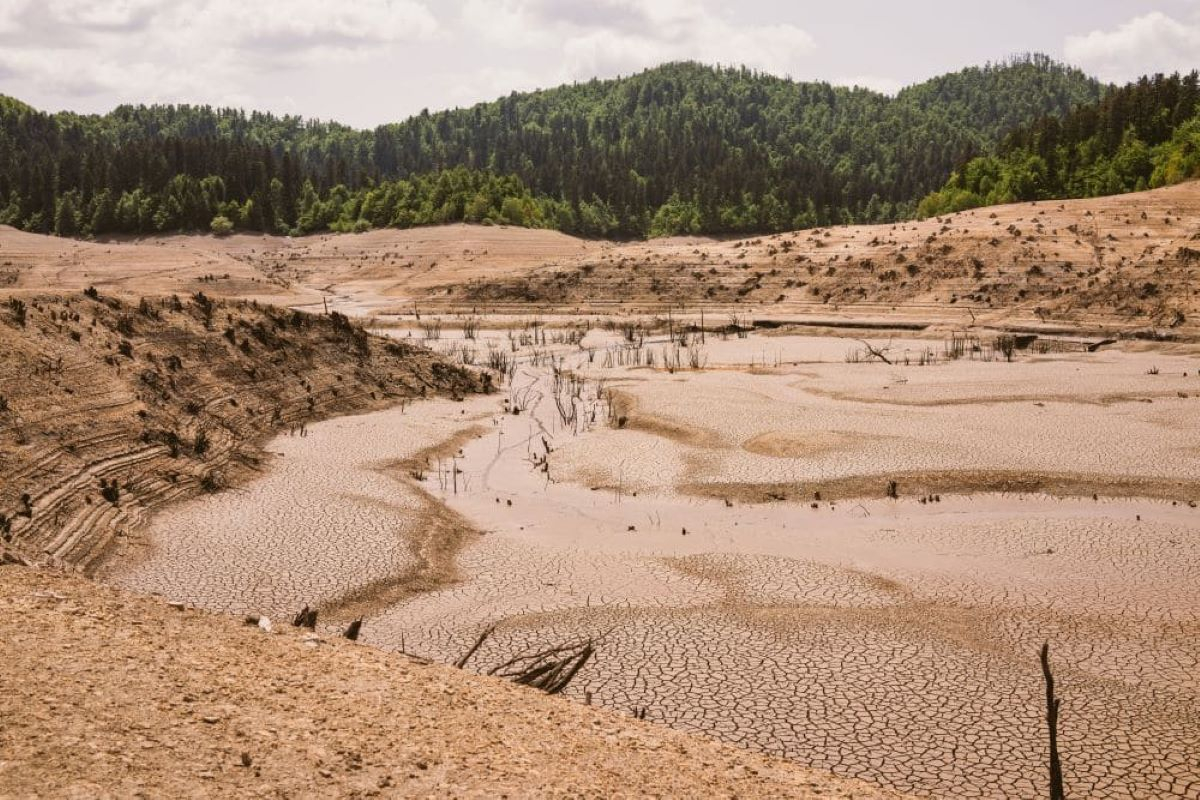Record droughts are becoming the new normal, with increasingly devastating impacts on economies, societies and the environment. Sounding an unprecedented alarm are the UNCCD (United Nations Convention to Combat Desertification) and the European Commission's Joint Research Centre, which on 2 December presented the World Drought Atlas The announcement was made in Riyadh, on the opening day of COP16 Desertification, which sees the 197 UNCCD member states negotiating on how to build humanity's water resilience.
The Atlas represents the most comprehensive global analysis of systemic drought risks and solutions to address them. Through maps, infographics and case studies, the document shows how droughts affect key sectors such as energy, agriculture, river transport and international trade, generating cascading effects that amplify inequalities, conflicts and public health threats. “I urge all nations, and in particular the Parties to the UNCCD, to take the Atlas findings seriously. At COP16 of the UNCCD, Parties could change the course of history towards drought resilience. We seize the moment, knowing that the Atlas provides a pathway to a more resilient future for all,” said UNCCD Executive Secretary Ibrahim Thiaw.
World Drought Atlas: the working group
The publication of the Atlas was made possible thanks to the collaboration between the CIMA Foundation, an international centre of excellence dedicated to the study and management of climate change risks, which coordinated the study, the Vrije Universiteit Amsterdam in the Netherlands and the United Nations University Institute for Environment and Human Security in Bonn, Germany. Describing this synergy is Lauro Rossi, programme director of CIMA Foundation and coordinator of the Atlas. “The Global Drought Atlas brings together experts and practitioners across disciplines and beyond boundaries to create a comprehensive tool for understanding and visualising the multifaceted impacts of drought while proposing sustainable solutions. This collaborative effort serves as a model for policy action, emphasising that collective effort is critical to building resilient and adaptive societies.”
Drought is indeed one of the world's most costly and deadly hazards and is set to affect 3 out of 4 people globally by 2050. However, many countries and sectors are still failing to prepare for it with appropriate actions, policies, investments and incentives. “Human activities are causing or exacerbating drought and its impact on society,” said Marthe Wens, senior drought researcher at the Institute for Environmental Studies at the Vrije Universiteit in Amsterdam. “This is clearly illustrated in the Atlas, based on scientific literature and examples from around the world. It also means that through land and water management we have the opportunity to reduce the impact of drought and increase the resilience of our systems.”
The impacts of man-made droughts
The Global Drought Atlas starts from a basic premise, namely how the worsening drought risks are linked to human activities. Droughts have increased by 29% since 2000 due to climate change and unsustainable management of land and water resources. The paper then elaborates on the impacts of drought in five key areas: water supply, agriculture, hydropower, inland navigation and ecosystems.
Indeed, droughts can reduce hydropower production, leading to higher energy prices or power outages, and can disrupt international trade due to low water levels hindering river transport, as in the case of the Panama Canal. On the nature front, CIMA Foundation explains in a statement, the Atlas points out that while drought poses a threat to ecosystems, increased biodiversity can mitigate the impacts of drought. This means that promoting biodiversity is important for building drought resilience and vice versa. The food-land-water nexus is another major theme of the Atlas, as agriculture accounts for about 70 per cent of global freshwater use and is also severely impacted by drought. Smallholder farmers and marginalised groups are particularly vulnerable due to inequalities in access to water and the resources needed to build drought resilience.
What have we learnt from recent droughts?
The Global Drought Atlas includes 21 global case studies, demonstrating that no country is exempt from drought risks, regardless of size, GDP or latitude, and that all nations can take effective preparedness measures. The publication examines impacts and lessons learned from recent droughts in the US Great Plains, Barcelona, Spain, and the Yangtze River Basin in China. It also analyses effects in the Corredor Seco of Central America, the Indian subcontinent and the Horn of Africa. In addition, the specific needs, resources and perspectives of indigenous communities in drought management are explored. “The World Drought Atlas underlines the urgent need to rethink how we perceive and deal with drought risks in our interconnected world,” said Shen Xiaomeng, director of the UNU-EHS in Bonn. “It challenges us to go beyond temporary solutions and envision systemic and dynamic solutions that not only reduce risks globally, but also prioritise the most vulnerable.”
This article is also available in Italian / Questo articolo è disponibile anche in italiano
Image: Envato



